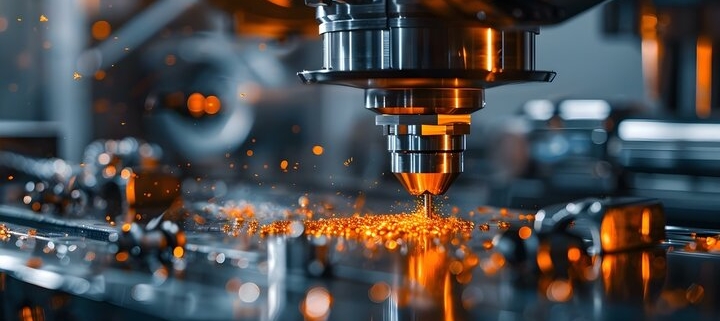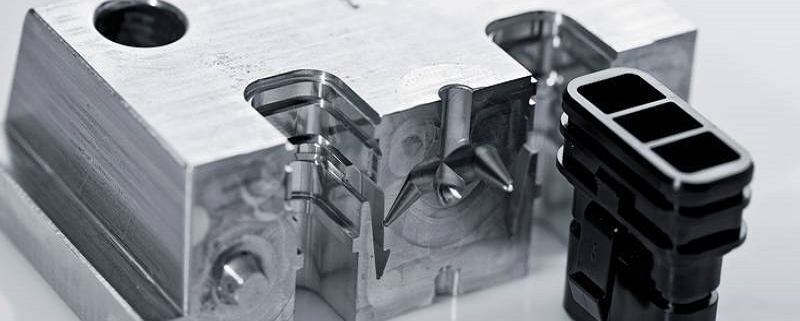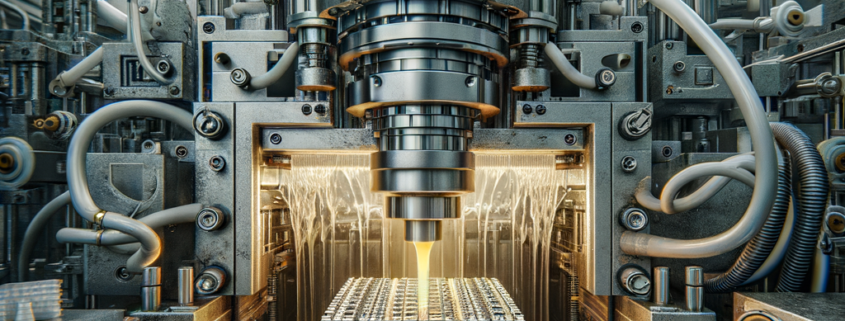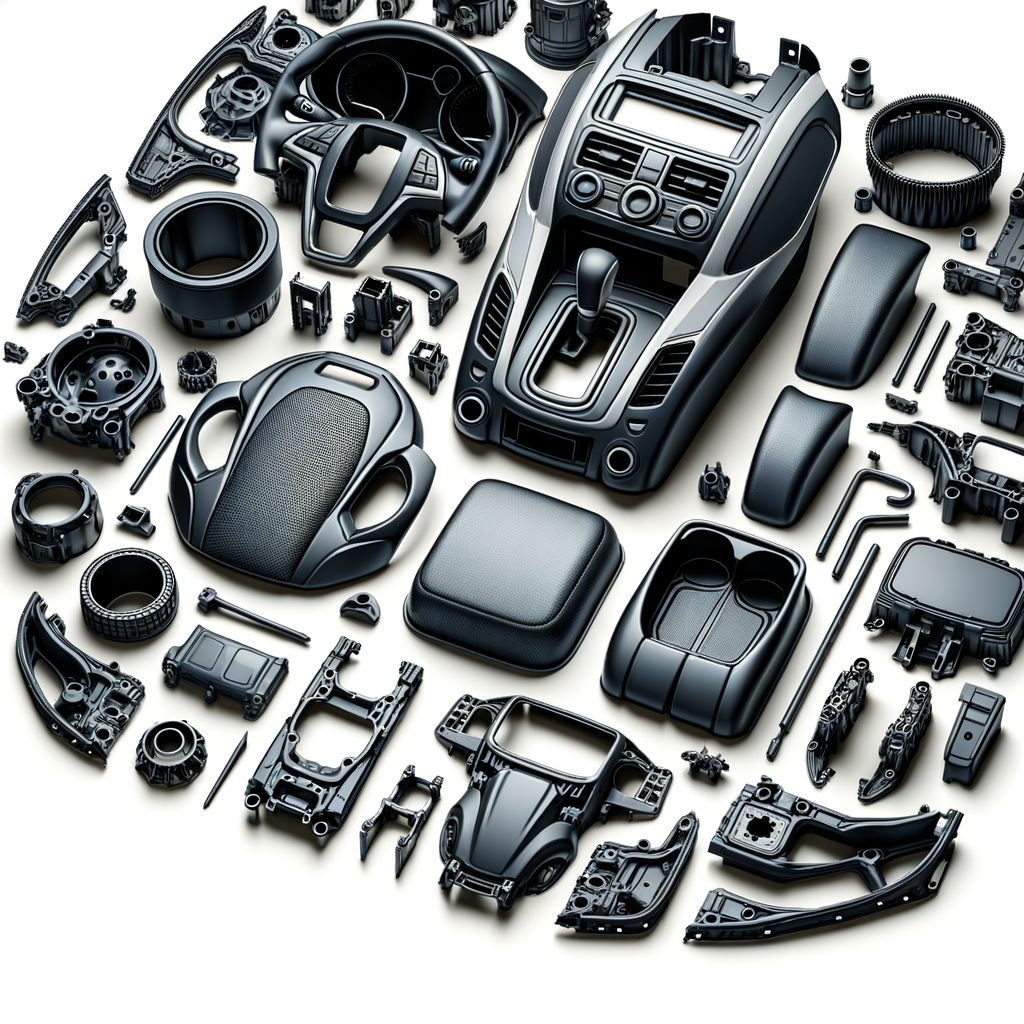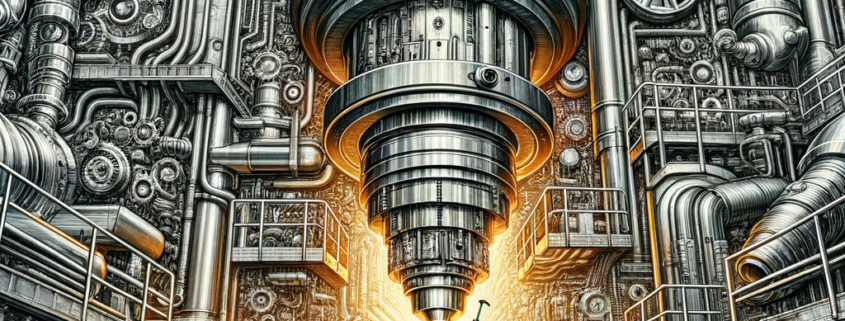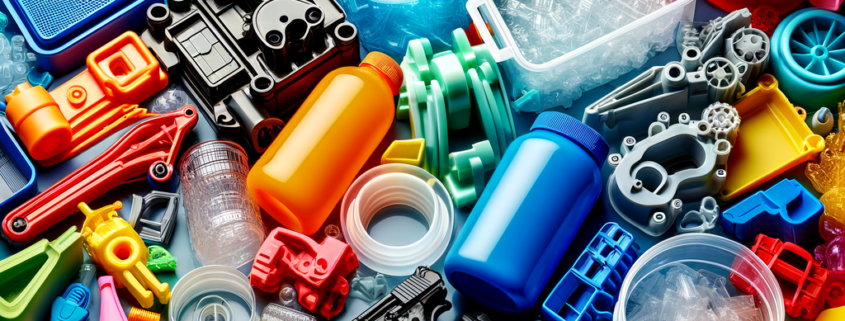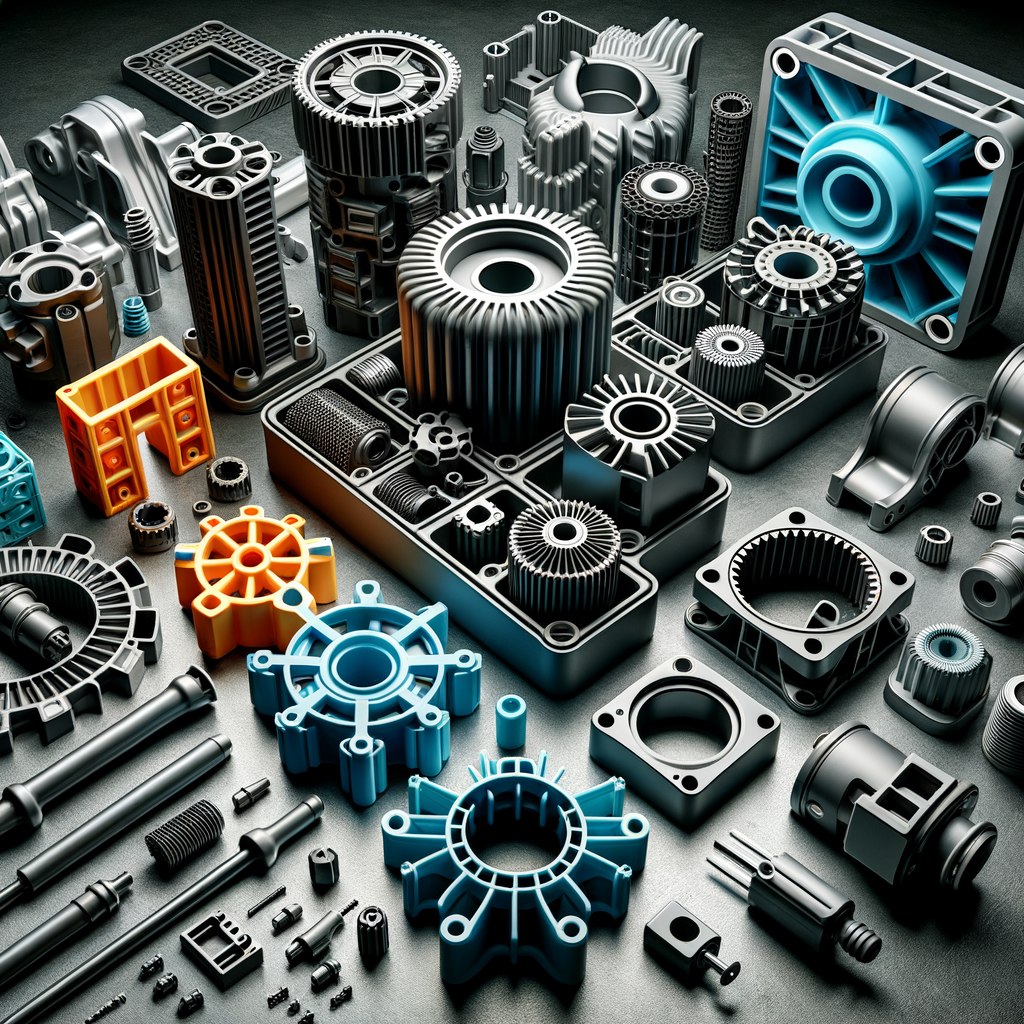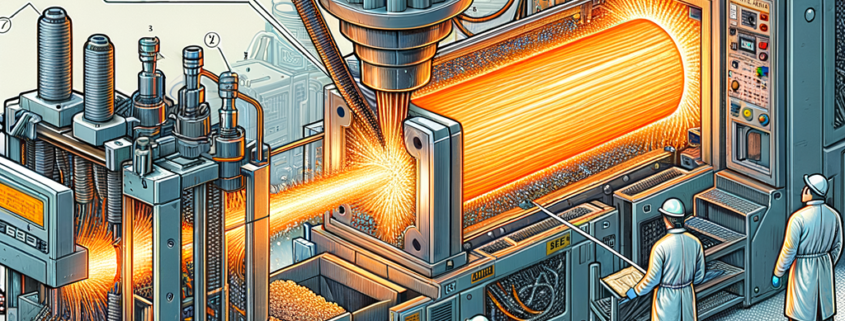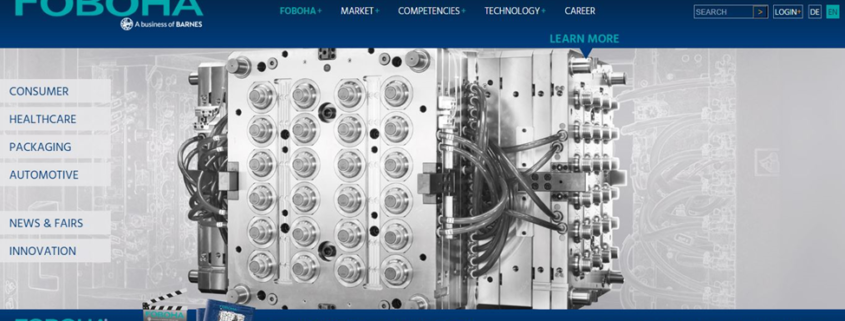China has been the leader in manufacturing, especially in the area of mold making. The great demand for high-quality plastic products across the world has led to companies worldwide turning to Chinese mold manufacturers for precision, cost-effectiveness and innovation. This post will help you search whether you are looking for the best mold maker in China, key factors to consider in choosing the best China mold maker, the advantages of working with a China mold maker, and how to pick a China mold maker for your business. The injection molding process is very often used in manufacturing and involves injecting plastic, which is molten, into a mold to produce highly precise parts. This method is essential in sectors such as automotive, electronics, medical devices, and consumer goods. In recent decades, China has risen to the global level in the field of mold production and is the supplier of high-quality molds at an affordable price.
The number of China mold makers has risen so sharply that it has affected the global market with low-cost and innovative solutions. One of the reasons based on foresee government’s support for manufacturing infrastructure in China is the dominance of injection molding. China’s injection mold-making comprises of thousands of thousands of small factories and large high-technology factories. Advanced CNC machining, EDM (Electrical Discharge Machining), and automated processes are used to create molds with precise and fast accuracy in these companies. China mold mold-making industry is developing and being supported by continuous investment in technology and skilled labor to comply with international quality standards. Businesses that need their molds to be high-quality, durable as well as cost-efficient have to look for the best mold maker in China. A dependable mold maker ensures good design, choice of high-quality materials, and meticulous quality control. In China, there are companies specializing in mold making to cater to client specifications to allow more flexibility and differences in production.
This post will talk about 사출 성형, mold manufacturing, CNC machining, die casting, surface finishing, quality control, prototype development, custom tooling, mold cavities, and material selection.”
The Growth and Development of China’s Mold-Making Industry

In recent years, the China mold maker industry has expanded very fast. China has become a global leader in mold manufacturing. With plastic injection mold production increasingly moving from developed nations to China, the country has become a major / town for mold making, offering much to manufacturers worldwide.
The injection mold maker in China industry operates in a very rich environment, as China has a huge and diversified manufacturing industry. In the modern manufacturing world, plastic molds are an important factor in manufacturing operations and the quality of these plastic molds determines to a great extent the effectiveness and accuracy of all production processes.
The Rise of China’s Injection Mold Industry
China’s plastic mold maker industry plays an important part in China’s manufacturing. Carrying the technology of mold making also represents the develop of a country’s manufacturing capabilities. In the past 10 years, China’s plastic injection mold industry has expanded rapidly.
The industry grew steadily at almost more than 19 percent per annum from 2003 to 2013. China’s injection mold maker in China sector showed significant improvement in its capacity of production, revenue, and improved measure of profitability in contrast to past years.
The statistics are recent, more than 1,500 of China’s medium-to-large sized plastic mold manufacturing companies are in operation. Over the years, this made their combined annual revenue to surpass 160 billion yuan and grew by more than 27%. Total earnings in profits showed a rise of nearly 14 percent reaching over 10 billion yuan. Meanwhile, the domestic mold technology develops, local manufacturers become more competitive in the global market.
Technological Advancements and Market Position
There was great progress in technical and production efficiency from the best mold maker in the Chinese industry. There is adoption by Chinese companies of advanced manufacturing techniques that enables them to improve the precision of products, the durability of products and also overall quality of products.
Despite the advancement, the industry of injection mold has reached quite a development in China but countries like the United States and Japan still lead the high precision injection mold market. But as China develops, the gap between domestic and international competitors starts to close.
The position of injection mold makers in China companies in the global market depends on whether they can integrate cutting-edge technology. With automation, AI-driven design, and precision engineering on the rise, Chinese manufacturers are in the perfect position to tap their players in these trends and gain more strength.
Key Manufacturing Hubs in China
In geography, China’s mold-making industry is mainly concentrated in two major areas:
- A major focus for mold production and sale, and it is home to some of the largest and most sophisticated manufacturing facilities in the whole world is the Yangtze River Delta.
- Another important center for injection mold production, both in domestic and international markets, is another critical center, namely the Pearl River Delta.
A large portion of China’s plastic injection mold output is supplied to markets including automotive, electronics, medical devices and consumer goods.
The China’s mold industry also has been participated by the foreign investment. Almost 50 percent of the total revenue and profit of the industry come from enterprises that are funded by investors from Hong Kong, Macau, and other international markets. The involvement of this foreign has helped introduced new technology, different quality standers and increase China’s reputation as the best place for mold manufacturing.
Injection mold making in China

Injection molding is a very popular manufacturing process used for the creation of plastic components wherein molten material is injected into a mold. This is a necessary process used in the automotive industry, electronics, medical and consumer goods industry, among others. Fortunately, the right injection mold maker in China can play a role in improving product quality as well as cost-effectiveness.
Advantages of Injection Molding in China
- Advanced CNC machining, electro-discharge machining (EDM), etc. Chinese mold makers use high-precision equipment to make molds with excellent accuracy and strength.
- Global Products Demand – Due to global demands, many manufacturers can offer machines to work the shorter lead times and launch products faster.
- Mold Design – A mold maker would do the installations and fix it, this is why a mold China would provide the best solutions when they are given unique design specs especially in the simple and complex mold designs.
- Many Chinese manufacturers are adopting eco-friendly practice by reducing waste and energy consumption, and using recycled materials, and optimizing productions efficiency.
- The best mold maker in China offers high-quality molds at much more affordable prices compared to Western countries due to low cost of labor and material.
- China industry, Plastic mold makers in China feature both small-scale and large-scale production abilities which is suitable for any business that requires its plastic mold.
Having an experienced and chosen injection mold maker in China helps businesses reap the benefits of advanced technology, stable manufacturing processes, and cost treats while maintaining high-quality products.
Injection Mold-Making Process

Modern manufacturing depends on injection mold making to produce many plastic parts at high quality. A mold maker creates the tool by developing the mold design and then processing it into a testable shape for molten plastic products. A reliable Chinese injection mold maker follows established steps to produce molds that work well and save money.
1. Product and Mold Design
Product designers at the start of mold-making develop a complete 3D model of the plastic part for engineering purposes. The final product design determines how the mold will be created.
- The part’s dimensions, material, and production volume.
- The number of cavities (single-cavity or multi-cavity molds).
- Our system includes ways to cool and push out molded parts effectively.
Mold design optimization becomes easier through advanced CAD and CAE software systems. Experienced plastic mold maker China companies examine mold flow patterns to find any production issues in advance.
2. Mold Material Selection
The selection of suitable mold materials directly affects how well your product will work and stay intact. An experienced injection mold maker in China works with these standard mold materials:
- Hardened Steel serves best for production lines that create many parts because it stays strong under heavy use.
- Pre-Hardened Steel: Easier to machine but suitable for medium production runs.
- Aluminum provides an economical solution for prototype making and small batch production due to its lightweight properties.
The mold selection process depends on production needs, plastic type ,and how long the mold needs to last.
3. CNC Machining and EDM Processing
After approving the mold design our production team uses advanced machines to start manufacturing.
- The CNC System controls the precision cutting of metal blocks through Computer Numbered Control for industrial production.
- The EDM machine generates intricate details through electrical sparks that CNC machines cannot match.
The top mold manufacturer in China uses their experience to machine every mold part perfectly which decreases the chance of product defects in the finished plastic parts.
4. Heat Treatment and Surface Finishing
Applying heat treatment strengthens the metal parts to make the mold more durable and effective. The heat treatment process makes the mold parts stronger and better able to withstand production cycles.
The mold gets final processing through surface treatments after heat treatment.
- Polishing: Creates a smooth, high-quality finish.
- Texture: The molding process includes texturing operations to add specific surface designs to finished plastic items.
5. Mold Assembly and Fitting
All mold parts that have been machined and treated are put together to make a finished mold system. This includes:
- The mold system contains both the plastic forming tools core and cavity units.
- The molded product can be taken out through ejector pins.
- The system includes channels that control mold temperature and speeds up production cycles.
- The guide pins and bushings help the mold parts stay correctly aligned during production.
Mold fitting needs to be done correctly to produce quality results during injection molding. Specialist engineers from China’s professional injection mold-making company check and refine each mold part until it fits perfectly.
6. Mold Testing and Trial Runs
The mold manufacturer tests the mold using initial injection molding operations ahead of starting regular production. This step ensures that:
- The mold proves its ability to work properly without any issues.
- The plastic components match quality requirements for size, surface quality, and material strength.
- Manufacturers make necessary changes to enhance product quality before starting mass production.
Plastic mold maker China companies test molds with various plastic materials during trials to check their performance and production effectiveness.
7. Mold Modifications and Final Approval
Our team makes required changes when testing finds problems with performance or operations. These may include:
- The cooling system needs adjustments to remove heat better.
- The mold maker adjusts the ejector pin positions to make part removal easier.
- We improve the cavity surface by smoothing or reshaping the mold parts.
After the mold meets all quality standards during inspections it becomes ready for large-scale manufacturing.
8. Mold Delivery and Production Start
The approved mold travels to the injection molding facility where production workers install it into an injection molding machine. A top-tier Chinese mold maker supplies technical help and maintenance guidelines to keep your mold running well into the future.
The Factors that Affect the Costs of Injection Molding

The cost of plastic molds and plastic injection molded parts is an important factor that determines the overall success of a manufacturing project. There are several things that affect the injection molding costs; part complexity, size, surface finish, material selection, mold cavities and production volume. This can be studied by businesses to optimize their designs and cut down on the expenses to engage with professional mold manufacturers.
Complexity of the Design
Mold manufacturing costs depend directly on the complexity of a component. More advanced tooling, required engineering, additional processing, contribute more toward a higher mold price. In order to minimize costs additional, unnecessary features, sharp angles and details should be simplified where possible. If some of the design can be kept simple, the part can be very cost effective without sacrificing its function.
Size of the Component
Naturally, a larger component requires a larger mold, which in turn uses more raw material and machining time. The total cost increases with the increase in the mold size. In the case of injection molded parts, one of the essential aspects of designing is that the size of the part can be optimized without affecting the performance. Reducing unnecessary bulk (in this example, reduction of vanilla pods) can help lower production costs with product integrity.
Choice of Material
Material and mold costs are strongly affected by the type of plastic that is used in the molding process. Such plastics like reinforced or high performance polymers have higher cost because of their durability and specialized properties. In addition, if abrasive or heat resistant plastics are used, such as hardened steel are required to withstand wear and as a consequence you increase the overall cost. It’s important to select a material that is of good quality but which won’t break the bank on performance.
Surface Finish Requirements
Molded part surface finish will affect part aesthetics as well as part cost. Manufacturers have the option of a lower grade finish, SPI Finish B-3, or C grade finish for the component not being part of the visible part of the final product. But if a nice, kind of nice quality finish is what you want, you are going to need to do additional process steps, additional cost, on the production process.
Cavity Count and Production Volume
Consequently, cost considerations are highly dependent on mold cavity configuration. This means that the single cavity mold would be cheaper to make, but the per part costs are higher because production is inefficient. However, multi cavities molds or family molds present a faster run time and a lower per unit cost but higher initial mold cost.
In this case, single cavity molds for small production runs maybe the most cost effective option. Despite that, for large production, multi-cavity molds can significantly lower long term costs through an increase in production output and efficiency.
Methods for Estimating Plastic Injection Molding Costs

When planning an injection molding project, depending on what manufacturers provide for pricing may not provide a complete picture of how a project might really cost. There are many ways to estimate plastic injection molding cost behaviours to help businesses make a better decision. There are following methods which help in calculating the expenses for different production volumes in an organized manner.
Low Volume Injection Molding Cost Estimation
Feature-based cost estimation is quite effective for small-scale production. The cost of mold influences the price of this part greatly, therefore for this part, low-volume injection molding often uses rapid tooling techniques to quickly have the mold produced so that a small number of molds can be produced.
Material prices are estimated accurately according to the part’s geometry shape and the design requirements. As well, the right injection molding machine must also be selected from a database with a column of available machines that will optimize cycle time based on component geometry, material properties, and machine specifications.
Another important step in the cost estimation is the choice of a mold base. Standard mold sizes from well known mold suppliers can be used to select the most efficient mold configuration. When the manufacturing and cost of material are calculated for different cavity arrangements, the most economically feasible arrangement can be determined.
Feature-Based Cost Estimation for Mass Production
A feature cost estimation method is best for high-volume manufacturing. Due to the large number of units manufactured in a given production run, mold expense is spread over higher numbers of units and more durable, high-precision molds can be used, even though they are more expensive upfront.
Based on current raw material prices, estimates of material costs are made based on part geometry. Another factor is selection of the most appropriate injection molding machine in order to reduce the production expense also to shorten cycle time.
The mold base needs to be selected using the sizes and categories of standard mold to be able to calculate mold expenses. Immediately thereafter, the needed mold setup is worked out according to part geometry and production requirements. Mathematical evaluations of multiple cavity configurations allow businesses to determine the most cost effective cavity that combines material, manufacturing and mold costs.
Plastic Mold Cost Estimation
The cost of manufacturing the mold itself might also be determined using another cost estimation method based on features. Part dimensions and required features such as cavities count should dictate the intent standard mold size. Processing requirements and overall price depend on the type of mold, the SPI standard mold or the rapid-prototype type for low-volume production.
A quick mold manufacturing approach can be used to produce molds within shorter timeframes which can shorten the lead time of low-volume products. But in the case of mass production high-precision molds made for durability will turn out to be a less costly option at a later time.
Average Cost Estimation Approach
An injection molding cost calculator will give a basic idea of what an injection molding job would cost without part geometry. Additional process parameters, such as material selection, runner count, number of components, etc, are also needed for this method of stepwise process transition.
A pricing database will help deduce the material cost of parts but customizable parameters like cycle time, machine rates and labor cost will breakdown production expense. A detailed cost summary of materials, manufacturing, and mold production is generated once mold costs are taken into consideration, and it helps firms to plan their budget in a very systematic manner.
Essential Tips for Finding a Reliable China Injection Molding Company

China mold maker selection is the key for good product quality, good delivery time and good cost capacity. Partnering with a trusted injection mold maker in China can impact the success of the project of your molding project due to the complexity of the injection molding process. With all these said, here are six key pointers for you to look for when searching for a reliable manufacturing partner.
TIP 1: Assess Product Quality
You need to set a point that product quality should be the top priority when you select an injection mold maker in China. The chances are higher that the material you are using will be high precision and the company will function in more ways to ensure that your product is good as well.
Before entering into a partnership, take the following steps:
- To check out their experience and management structure visit and check the company’s website.
- The company should request quality management certifications such as ISO standards.
- Find out if they have some details of other past projects (photos, case studies, etc.) and ask him/her to evaluate their capabilities.
- Ask him if he has experience in making similar products.
Reputable China mold makers will always be very clear where they stand in terms of quality standards and past work.
TIP 2: Verify Stable Production Capacity
Another major factor for choosing a China plastic mold maker is required timely delivery. With very lead times associated with Injection Molding Projects its very important to confirm that the manufacturer is able to meet deadline consistently.
The production capacity of a company shall be ascertained for evaluate.
- See what their facilities and machinery look like as mentioned on their website.
- Seek a detailed list of injection molding machines and equipment.
- Make sure they have enough production lines to fill the amount of your incoming orders.
However, you have to take into account, that a China injection mold maker with stable production capabilities and an enough well-equipped shop will help you to avoid delays and other unexpected problems.
TIP 3: Ensure Professional Technical Support
The injection molding process is complex engineering and not all product designers are mold manufacturing experts. The best China mold maker should help you optimize your design and eliminate the production risk.
Early stages on the way of communication seem to be:
- Does the manufacturer provide feedback from a professional perspective as to a possible design flaw?
- Do their engineers go through the feasibility of your mold design?
- Are they able to make suggestions for improvements that will improve durability and/or cost efficiency?
A qualified injection mold maker in China can help you to streamline your project by addressing technical challenges ahead of your mold making and avoiding costly revision.
TIP 4: Communication is King or Queen
Working with a plastic mold maker in China, without language barriers, can cause misunderstandings and delays hence it is quite important to have smooth communication.
Look for a company that:
- It has English-speaking sales representatives to be able to discuss.
- Multi-bilingual members of staff also ensure that communication is in continuous mode even when a key contact is not available.
- Allows you direct access to an engineer in your English working language for a technical discussion.
A manufacturer with strong communication skills will make much greater use of your time and will better understand what you want, thus achieving much greater efficiency.
TIP 5: Compare pricing for the cost-effective solution
However, injection molding can be pretty expensive, so it’s very important to find a China mold maker that can offer competitive pricing without compromising the quality.
To secure the best deal:
- Ask various manufacturers to send you more than one quote.
- Compare pricing for mold costs, material costs, and production fees, and compare schedules.
- Investigate cost reduction options including mold designs that would fit more in a mold or bulk buying discounts.
It’s with a trusted injection mold maker in China that you will get your quotations to be transparent in terms of pricing and will be able to assist you in finding a solution that fits your budget without hurting much on costs.
TIP 6: Check Company Reputation
Before you make the final commitment to the plastic mold maker China partnership, it is essential to get an idea of their market reputation. A company’s record with previous clients is an indicator of its reliability and quality of service.
This is how to check the manufacturer’s reputation:
- Give you the names of old customers to request references and ask for their experience.
- Search for online reviews, comments, reviews quoted from others (Testimonials), or independent ratings.
- Research the length of time the company has worked in the industry and with whom they have worked especially famous brands.
A positive customer feedback injection mold maker in China with a well experience is more likely to offer high quality result and professional service.
How to Choose the Best Mold Maker in China?

Selecting the mold manufacturer is no easy task. Some of the actors to think of are:
1. Industry Experience and Reputation
Search for manufacturers with a history in this business. An experienced China mold maker would have a long portfolio of successful projects and read handy client reviews.
2. Manufacturing Capabilities
Make sure that the plastic mold maker China you select has developed machines and technology. The high precision of a complex mold can be manufactured by a well equipped factory.
3. Quality Control and Certifications
Mold making is quality assured. Having ISO certifications is the benchmark of a top mold maker in China, and having strict measures of quality control should also be taken into consideration.
4. Communication and Customer Support
Communication in international business is clear. Cooperate with a manufacturer able to understand your needs and provide you updates in time.
5. Pricing and Lead Times
Compare the cost for different injection mold makers in China. Affordability is important, but never at the cost of quality. Likewise, make sure the supplier can fulfill your deadline requirements.
The Role of Plastic Mold Makers in Various Industries

Each of them is served by a wide range of industries that need specific molds.
1. Automotive Industry
They must be able to create high precision moulds for bumpers, dashboards and engine parts in the automotive sector. A reliable plastic mold maker China guarantees the durability of the project and also the consistency.
2. Medical Industry
Health regulations must be followed strictly in medical equipment and devices. The best manufacturers in mold makers abide by international standards to guarantee safety and quality.
3. Electronics Industry
Top injection mold maker China companies design and make intricate designs with the highest accuracy for electronic manufacturers for smartphone casings, circuit board components, etc.
4. Consumer Goods
High-quality molds are needed for household products, toys, and packaging solutions so that the level of production can be sustained. China mold makers can provide innovative and cost-effective solutions.
Future Trends in Mold Making in China

With the development of technology, the mold-making industry in China is still growing. Some key trends indicating the future of the world are as follows.
1. Automation and AI Integration
Robotics and AI-driven systems are being adopted by many manufacturers to increase precision and reduction of repetition.
2. Eco-Friendly Materials
With more and more worries about the plastic waste, a number of China injection mold maker firms are probing sustainable materials.
3. 3D Printing in Mold Making
With the 3D printing technology, the prototyping stage is changed and development costs and time are reduced.
4. Increased Global Collaboration
International companies are partnering up with Chinese mold makers respectively to enhance quality and expand their international footprint.
Sincere Tech – Leading Mold-Making Company in China

Sincere Tech Co., Ltd. was founded in 2005 and is a leader in China mold making industry offering a comprehensive manufacturing solutions. The company is located in Guangdong Province and headquartered in Dongguan City, we specialize in plastic injection molds, die cast molds, silicone rubber molds and CNC machining services.
Diverse Service Portfolio
Sincere Tech is a wide area service provider that caters to different industries.
- High Quality Plastic Injection Molding: The products are plastic components and are high quality for the areas of automotive, electronics, medical devices and consumer goods.
- Specializing in aluminum, magnesium, and zinc die casting, which varies in requirements with precision and versatility, the company caters to the industry’s needs.
- Offering Silicone Rubber Molding, the company ensures that the products are produced as per specific functional as well as aesthetic standards.
- Advanced CNC Machinery: Our machinery is equipped with advanced CNC machines for the production of intricate and precise, and achieving excellent tolerances and finishes, parts.
- As a rapid prototyping and product assembly services supplier, the company ensures seamless transition from concept to completion with its services.
Quality Assurance and Certifications
Under the strict quality control systems, Sincere Tech is operating according ISO 9001:2015 standards. A commitment of this kind guarantees that with no exception products will meet as well as outperform the expectations of the client.
Client-Centric Approach
Sincere tech adopts a customer focused methodology and hence provides personalized services starting from a consultation to the post production support. This boosts the working of long term partnership, guaranteeing that client projects are done with accuracy and efficiently.
Global Reach and Industry Recognition
Sincere Tech has earned a strong presence across the whole world in the nation. It is a reputed leader in the industry for aluminum casting with its reputation as a top aluminum casting manufacturer in China and the USA.
In conclusion, Sincere Tech Co., Ltd, is at the threshold of mold mold-making industry, thus bearing vast types of services, guaranteeing quality standards, and being a customer-friendly company for companies wanting reliable and creative manufacture.
결론
Though Chinese injection mold manufacturers are relatively new in the global market, they have gained a tremendous reputation in the injection mold industry. China mold makers become well-known in the world thanks to advanced technology, skilled labor, and cost-effective production. Short lead times, precision engineering, and cost-effective customized solutions are what companies, which need reliable mold manufacturing benefit from. Automation and eco-friendly practice trends are on the increase and render China stronger in the industry. Selecting the best mold maker in China is nothing but going through a strict review of its experience, its production capacity, its quality control, and its customer service. To ensure the highest standards of the injection mold design, manufacturing and finishing processes, one needs to deal with a reliable injection mold maker in China. Chinese mold manufacturers can provide a complete series of solutions for the automotive, medical, electronics, and consumer goods industries.
Furthermore, the plastic mold maker in China has scalable production capabilities, and businesses can grow lucratively while retaining low costs. Furthermore, manufacturers are taking time to look into the usage of environmentally friendly materials and energy-efficient processes. However, overall China remains the best place to turn to for injection mold making for the reason that it has superior technology, the products are affordable and their quality is such that, you can be sure that they will meet international standards.
FAQs
1. Why do people use China for injection mold manufacturing?
Production in China is also cost effective, advanced technology, skilled labor, as well as quicker lead times and make China the injection mold manufacturing world leader.
2. How to choose a good mold-making company in China?
Select an experienced mold manufacturer that has relevant certifications, sufficient production capacity, quality control measures and customer reviews before making any selection.
3. Which Chinese industries need plastic injection molding?
Chinese mold makers support many industries like automotive, electronics, medical, packaging and consumer goods which require high quality and precision engineered components.
4. Are Chinese mold makers able to produce complex designs?
Indeed, Chinese manufacturers can make highly intricate and accurate mold designs and yes, thanks to advanced CNC machining and automation.
5. Does Chinese injection mold makers conform to the international quality standard?
ISO-certified leading mold manufacturers in China also follow strict quality control to meet global industry standards.

